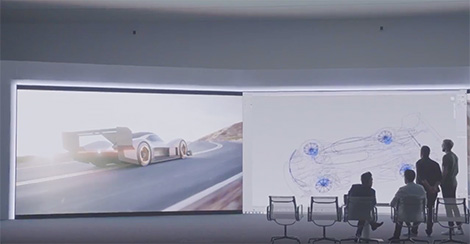https://giphy.com/embed/LwzSIpwoqkcYJvtkrq
There’s a huge amount of publicity accompanying Volkswagen’s push to be the fastest car up Colorado’s legendary Pike’s Peak hill climb, but thankfully it also throws up some cool design and engineering background, as well as some of the unique challenges faced.
The I.D. R Pikes Peak car will unleash its 680hp (although being electric, that means 500kW) of power up the hill later this month, but the likes of Ansys have revealed many of the simulation issues that have been worked on to try and be the fastest.
The unique track is 19.99-kilometers long and features 156 turns — climbing from 2,862 meters above sea level at the starting line to 4,302 meters at the finish line – with the high altitude resulting in about 35 per cent lower air density, creating different aerodynamic conditions than a racetrack on flat land.


Using Ansys solutions, Volkswagen engineers calculated the ideal balance of cooling airflow and aerodynamic loss and determined the best battery cooling strategy for optimal performance of the vehicle.
“Perfect energy management is a critical factor for beating the record in the electric car category at Pikes Peak,” said François-Xavier Demaison, technical director at Volkswagen Motorsport and I.D. R Pikes Peak project manager.
“The first test drive at Pikes Peak was successful and demonstrated the accuracy of our simulations. Our team is confident in the vehicle’s performance and eager to set a new record in the category.”
The video series below tracking the car’s design and engineering progression is well worth a watch:






